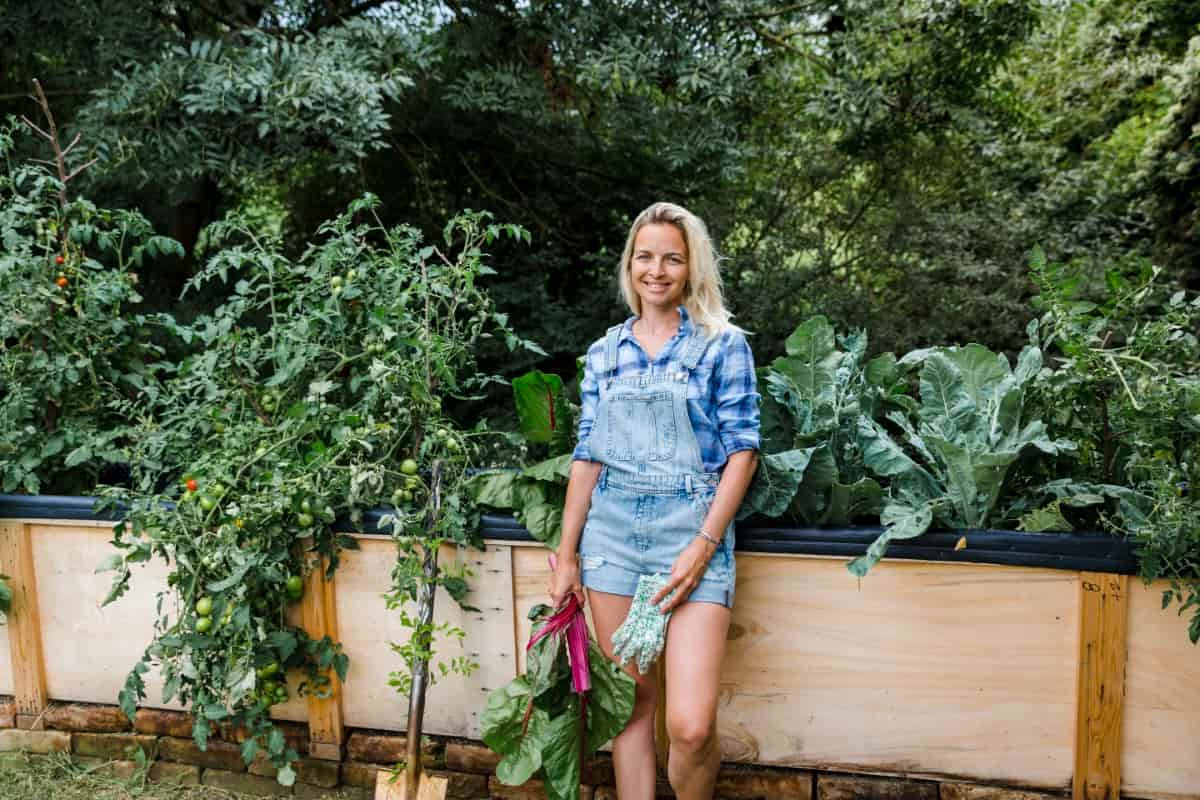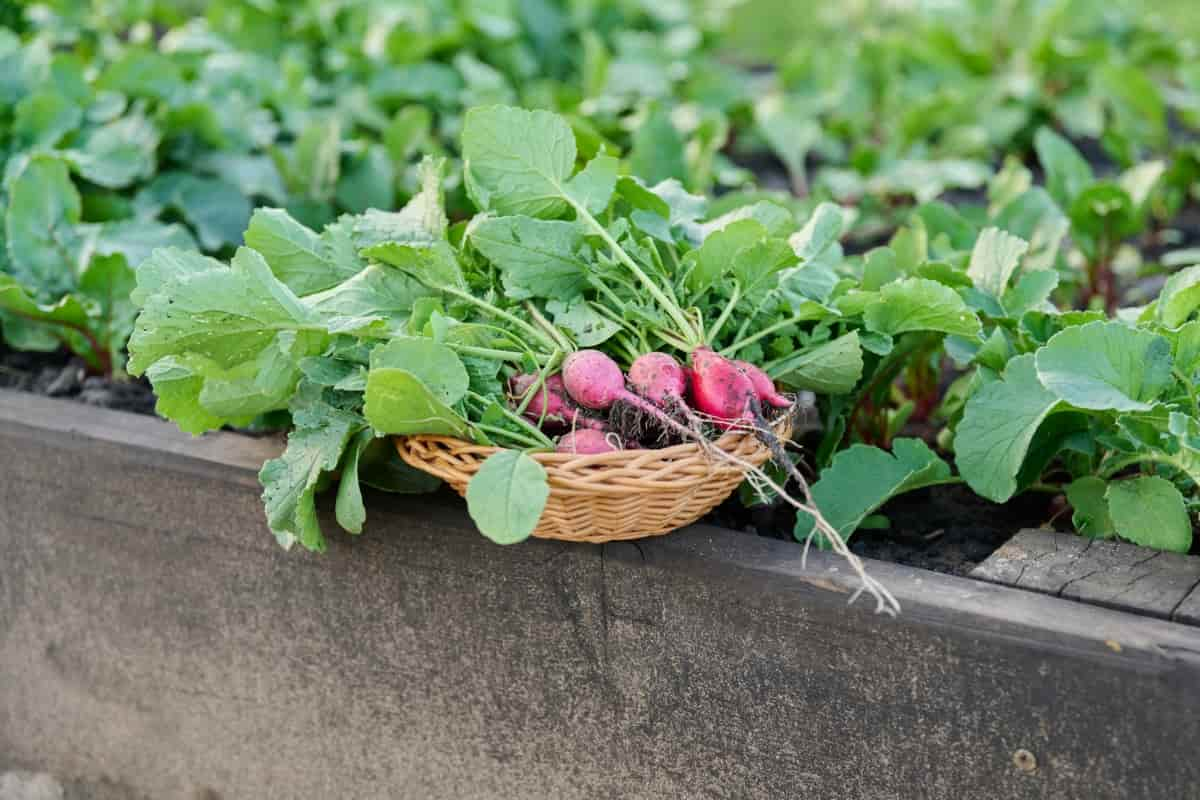You can raise your soil to a higher level by using raised beds for gardening. It can be as low as 4 inches tall using a 2×4 inch piece of wood to as high as a yard tall, so bedding is unnecessary. Raised beds are sometimes called garden boxes, constructed of wood, bricks, concrete blocks, or other recycled materials. Raised bed gardens are perfect for small-scale gardening and for intensive gardening that would not be possible in an inground garden.

15 Benefits of Raised Bed Gardening
Weed Reduction
Keeping your garden’s earthy contents separate from its wild surroundings reduces the chance for weed seeds to spread into your growing environment, thereby reducing weed growth. When you start with your mix, you’re double-protected against weed invasion, especially if your soil is weed-free.
Use of Less Chemicals
Weed reduction requires fewer chemical herbicides. Getting your own raised bed in your backyard is the best way to begin quick, convenient organic gardening. Keeping your money in your pocket is another reason to celebrate. The cost of chemical herbicides on top of your garden startup may be prohibitive. However, you can easily skip these costs and ensure that the food you grow is 100% safe, healthy, and chemical-free.
Raised Beds Look Attractive and Give Your Garden Structure
Well-structured gardens are aesthetically pleasing and provide year-round interest. If you’re growing vegetables in your garden, making these areas visually appealing makes sense. The last thing you want is an untidy plot ruining your view. Growing vegetables in raised beds create a neat, easy-to-manage area that adds architectural interest, particularly in winter when vegetation is sparse.
You Get a High Yield for the Space Used
In raised beds, crops can be grown closer together due to the fertile, deep soil. This means more food can be produced per square foot. Their compact design makes them particularly useful in urban vegetable gardens. It is important to space vegetables in such a way that their leaves will touch when they are fully grown. This method of growing vegetables reduces work and increases yields by suppressing weeds and conserving moisture.
Avoids Established Tree Root Systems
You may find that digging beds into the ground disturbs the roots of beautiful trees that grow in your garden. A raised bed prevents roots from coming into contact with it, causing damage and reducing water and nutrient competition.
Makes Crop Rotation Easy
Vegetable gardening relies heavily on crop rotation. It minimizes the risk of disease and pests and manages your plants’ nutritional requirements. Practicing rotations on several smaller beds is much easier than on one large one.
Plants in Raised Beds Overwinter Better
The soil in raised beds is richer, which allows for healthier, stronger plants in the winter, even though it becomes colder more quickly. Raised beds give vegetables an advantage over ground-grown vegetables, and this advantage can be just enough to help them survive cold and frost. It has been surprising to find a vegetable or two still going strong when Spring arrives for many gardeners.
In case you missed it: Raised Bed Vegetable Garden Layout Design: Plan, Spacing, and Key Principles

Faster Root Growth
A raised bed prevents soil from becoming compacted when walked on. In an open, oxygenated soil, soil life is more abundant, and plant roots have an easier time penetrating. Bigger, stronger, and happier plants result from faster root growth.
Easier Access
Individuals with physical limitations can benefit greatly from raised bed gardening. Raised beds alleviate the pains associated with bending over or kneeling for extended periods for gardeners with back or knee problems. Beds raised to a suitable height make gardening accessible to people with limited mobility. Those who utilize wheelchairs, chairs, or other mobility aids will easily reach the soil level if the bed is tall enough.
Raised Bed Soil Warms up Quicker in the Spring
Raised beds can be exposed on both the top and sides when the ground heats up in the Spring. The heat from the sun’s rays reaches a greater surface area, allowing the soil temperature to rise more rapidly. As it warms up quicker in the Spring, you can plant vegetable starts and seeds a few weeks earlier than you could in the soil.
Keep it Flexible
You can maximize your flexibility with raised beds. Raised beds that are portable, durable, and can be moved with you wherever you go are the best choice. You can set up temporary raised beds if you want to garden anywhere. You can use small raised beds on apartment balconies or pocket-sized patios. In-ground gardens aren’t worth the investment if you plan to move. In any setting, raised beds will keep you gardening.
Water Control
The raised beds allow the soil to drain well, avoiding the waterlogging challenges of many in-ground gardens. Raised beds are also less wasteful regarding irrigation due to the confined space. Keeping plants healthy and saving money on water bills is possible with drip irrigation systems that target their roots. Irrigation kits for raised beds help maintain soil moisture, reducing the amount of watering needed.
Pest Protection
Even though backyard wildlife habitats make a great addition to a garden, no one likes seeing furry and feathered friends eating carefully tended vegetables. Crops are protected from becoming snacks for wildlife by raised beds. A wire barrier at the bottom of the bed will prevent voles and gophers from accessing your tasty root crops, while a row cover over the bed will keep cabbage worms away. Mini-hoops are easy to install and protect your crops.
Better Drainage
A properly-prepared raised bed has better soil drainage than an in-ground bed since soil compaction is not an issue. A good drainage system means even watering, happy roots, and happy plants. This is especially important in areas with heavy clay soil. Conversely, a raised bed with well-amended soil can aid in water retention in sandy soils where too much drainage is a problem. It doesn’t matter what the soil quality is on your property; soil amendments can make a garden bed a perfect place for plants.
Raised Beds Have Less Soil Compaction
Soil compaction occurs when the soil becomes heavy and dense instead of light and fluffy. Therefore, water has a harder time flowing through the soil and draining properly. A bed in the ground can be stepped on by people, pets, and wild animals, compacting the soil. There is also the possibility that the soil in the ground can be heavier and denser and thus more prone to compacting. The lighter, fluffier soil in raised beds allows roots to grow and spread easily and water to flow evenly and freely.
In case you missed it: Frequently Asked Questions About Raised Bed Gardening

Conclusion
This is what you need to know! Here are 15 advantages of raised garden beds. You can start a garden with raised beds! Despite the up-front cost, they’re a great way to get started gardening, and your success rate and harvests will justify your investment. Raised beds are always a good idea, no matter how you add them!
- Feed Your Flock for Less: Top 10 Tips to Save on Chicken Feed
- Ultimate Guide to Ossabaw Island Hog: Breeding, Raising, Diet, and Care
- Hatching Answers: The Top 10 Reasons Your Chickens Aren’t Laying Eggs
- Eggs and Economics: Breaking Down the Cost of Raising Backyard Chickens
- Defend Your Greens: Proven Methods to Keep Iguanas Out of Your Garden
- Ultimate Guide to Cinnamon Queen Chicken: A Comprehensive Guide for Beginners
- Ultimate Guide to California Tan Chicken: Breeding, Raising, Diet, Egg-Production and Care
- Ultimate Guide to Marsh Daisy Chicken: Breeding, Raising, Diet, and Care
- 10 Types of Chicken Farming Businesses You Can Start for Profits